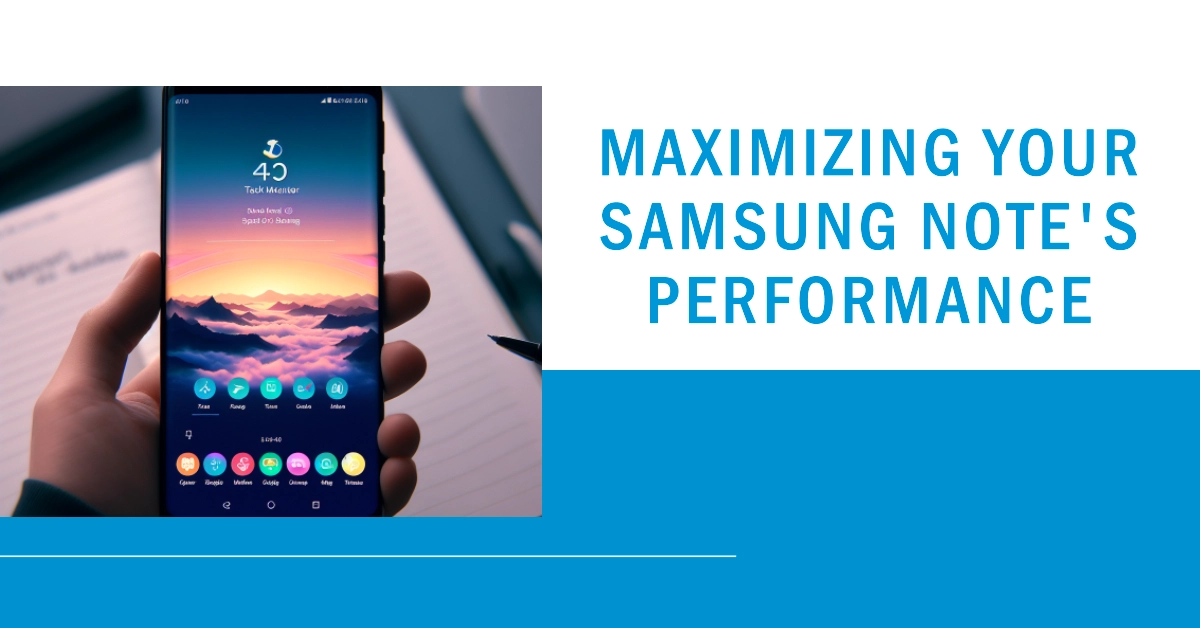The powerful Samsung Galaxy Note series is known for its multitasking capabilities, allowing you to seamlessly juggle between various applications and tasks. However, with such versatility comes the potential for background processes to drain your battery and slow down performance. This is where the built-in Task Manager comes into play.
This guide will equip you with the knowledge and skills to utilize the Task Manager effectively, ensuring your Galaxy Note runs smoothly and efficiently. We’ll explore what the Task Manager does, how to access it, and most importantly, when and how to use it for optimal performance.
Understanding the Task Manager: Your Key to Performance Optimization
The Task Manager acts as a control center for all your running applications and background processes. It provides a detailed overview of their resource consumption, including RAM usage, CPU usage, and battery drain.
This information allows you to identify resource-hungry applications and take necessary actions to optimize your phone’s performance.
Accessing the Task Manager: Three Easy Methods
There are three ways to access the Task Manager on your Galaxy Note:
Method 1: Recent Apps Button
- Press the Recent Apps button (the soft key with three vertical lines) located at the bottom of your screen.
- Swipe through the recently used applications until you reach the “End all apps” button.
- Tap the “End all apps” button to access the Task Manager.
Method 2: Long-press the Home Button
- Long-press the physical Home button on your Galaxy Note.
- At the bottom of the screen, tap the “Task Manager” button (the icon with three overlapping squares) to access the Task Manager.
Method 3: Swipe Down from the Top (Quick Access)
- Swipe down from the top of the screen to access the Quick Access Panel.
- Tap the “Task Manager” icon (the icon with three overlapping squares) to access the Task Manager.
Navigating the Task Manager: Understanding the Interface
The Task Manager interface displays the following information:
- Running applications: A list of all currently running applications, displayed with their icons and names.
- RAM usage: The amount of RAM each application is utilizing, shown as a percentage of total RAM.
- CPU usage: The percentage of CPU resources each application is consuming.
- Battery usage: The estimated battery drain caused by each application.
Optimizing Your Galaxy Note: When and How to Use the Task Manager
While the Task Manager is a powerful tool, it shouldn’t be used indiscriminately. Here’s when and how to utilize it for optimal performance:
1. Identifying Performance Issues
If your Galaxy Note feels sluggish or the battery drains quickly, launch the Task Manager.
- Look for applications with high RAM or CPU usage. These might be the culprits impacting your performance.
- If an application seems stuck or unresponsive, force-close it to free up resources.
2. Ending Unnecessary Background Processes
Background processes running in the background can drain your battery and slow down your phone.
- Use the Task Manager to identify unnecessary background processes and end them.
- Be cautious, however, as some background processes are essential for your phone’s functionality.
3. Managing Battery Life
Identify applications contributing significantly to battery drain.
- Consider limiting their background activity or uninstalling them if you rarely use them.
- Use the “Optimize battery usage” feature within the Task Manager for further optimization.
4. Improving Multitasking Performance
When multitasking between demanding applications, use the Task Manager to ensure sufficient RAM availability.
- Close any unnecessary apps before launching demanding tasks to prevent performance issues.
5. Force Closing Applications
In case an application freezes or becomes unresponsive, use the Task Manager to force-close it.
- Locate the application and tap the “End Now” button.
This will forcefully terminate the application, freeing up resources and restoring responsiveness.
Important Notes:
- Force-closing applications frequently can impact battery life. Do so only when necessary.
- Don’t force-close essential system applications. This can lead to unexpected behavior or instability.
Mastering Your Galaxy Note with the Task Manager
Understanding the Task Manager and utilizing it effectively can significantly improve your Galaxy Note’s performance, maximize battery life, and ensure a smooth user experience.
Remember to use it judiciously and only when necessary. This handy tool, combined with smart resource management, will empower you to unleash the full potential of your Galaxy Note.
